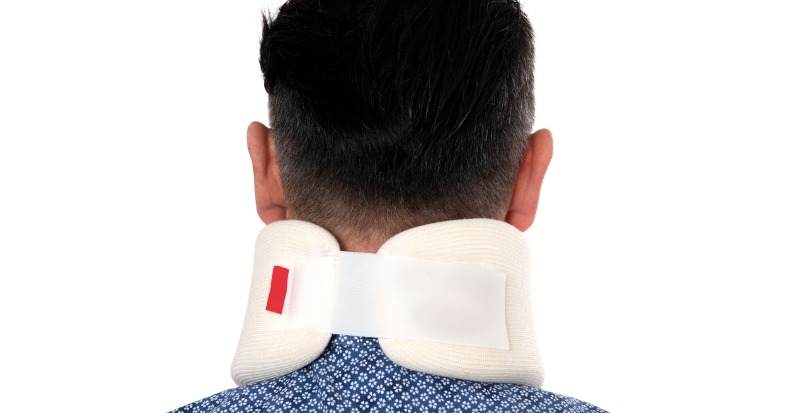When paramedics suspect a neck injury following a motor vehicle collision, they will utilize a cervical collar to immobilize the neck for transport to the emergency room so a more comprehensive examination can take place. While a cervical collar is essential in these situations for achieving the best possible outcome, there is another type of collar that may be prescribed to a patient with a whiplash injury following a car accident that may impede recovery: the soft cervical collar.
The soft cervical collar allows for some movement while still supporting the head and neck with the idea of relieving the cervical tissues from some stress while they heal. A study published in 2021 that included 2,162 patients who visited the emergency room within 48 hours of a motor vehicle collision found that 85.4% received a soft cervical collar. The authors of the study found that patients who received the soft cervical collar were nearly four times (8.4% vs. 2.5%) more likely to return to the emergency room within three months. The results suggest that soft cervical collar use is a risk factor for a return visit to the emergency room, implying that recovery is dramatically affected, even though it’s common practice in this setting.
In another 2021 study, researchers investigated a different approach for treating whiplash associated disorders (WAD) patients during their initial visit to the emergency room. Among a group of over 5,200 WAD patients, the research team observed that incorporating spinal manipulative therapy—the primary form of treatment provided by doctors of chiropractic—not only led to a reduction in soft cervical collar use, but also fewer x-rays and orthopedic referrals. Additionally, this approach was more effective for detecting grade IV WAD cases (fractures).
The findings from these studies suggest that immobilization with soft cervical collars following an emergency room visit for WAD may hinder recovery, while early active treatment may hasten recovery. This aligns with many WAD treatment guidelines that dissuade from practices that restrict movement (such as cervical collar use and prolonged bed rest) and encourage treatment that promotes activity. This includes carrying out normal activities (provided they don’t lead to sharp painful sensations) and manual therapies (like spinal manipulation and mobilization) that help to restore normal joint movement. Patients may also be encouraged to perform exercise to strengthen the deep neck muscles, which are commonly weakened in WAD patients, and to adopt an anti-inflammatory diet to speed recovery.
